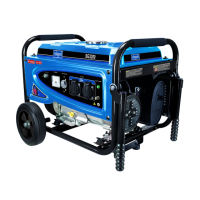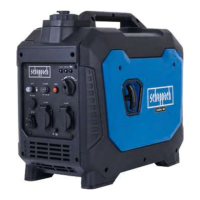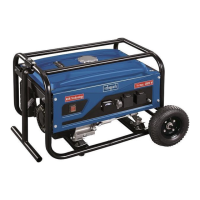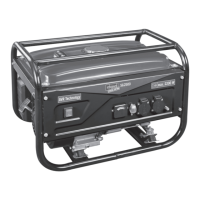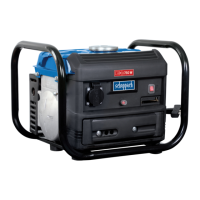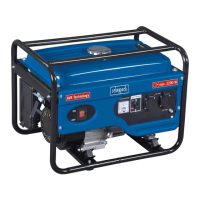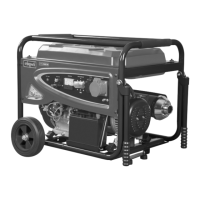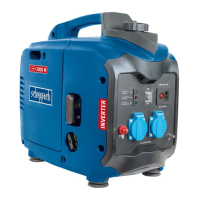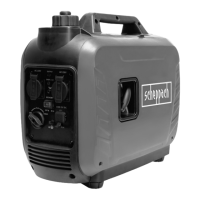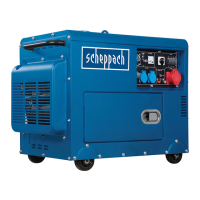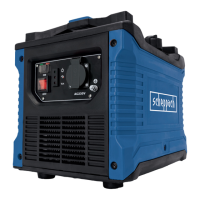www.scheppach.com
24
|
GB
• Do not smoke whilst refuelling or in the area in
which the petrol is stored and prevent naked ames
or sparks under these circumstances.
• After refuelling, ensure that the tank cover is closed
correctly and securely again. Take care!
• Mop up spilled petrol immediately.
• If petrol is spilled, ensure that the area is dried be-
fore starting the engine.
• Avoid repeated or long contact of the fuel with the
skin and avoid breathing in the fumes.
• Keep the fuel out of the reach of children.
• If there are occasional taps or knocks from the en-
gine, you should use a dierent brand of petrol. If
this does not solve the problem, contact an author-
ised dealer.
WARNING:Operating the engine with continuous ig-
nition tapping or knocking can result in damage to the
engine. Operating the engine with continuous ignition
tapping or knocking is considered improper use. The
manufacturer is not responsible for the resulting dam-
ages; the user solely bears the risk.
9. Start up
Earthing the generator
Earthing the housing is possible to discharge static
charging. To do this, connect a cable on one side to
the earth terminal (12) of the power generator and on
the other side to an external mass rising pipe (e.g.
rod earth).
WARNING:Do not use any pipes that carry inamma-
ble substances as an earth source.
Starting the engine (Fig. 1 + 7)
NOTE:Do not connect the electrical device before
starting the engine.
1. Turn the fuel valve key (3) to “ON”.
When the engine is cold:
Move the choke lever (3) to the CLOSED position by
moving the lever to the left.
When the engine is warm:
1. Move the choke lever (6) to the OPEN position by
moving the lever to the right.
2. Set the on/o switch (9) to the ON position
3. Pull the pull cable starter (6) slowly until resistance
is noticeable. Then pull hard.
4. Return the choke lever (3) to the OPEN position
while the engine warms up.
Installing the support feet (g. 4)
1. Fit the support feet (14) to the lower frame strut.
Fasten the support feet with a bolt and nut (F)
each.
Installing the transport handle (g. 5 + 6)
1. Fix the handle holder (b) to the upper frame (19)
with the screws and nuts (E).
2. Then align the transport handle (8) in the handle
holder (b) and x it with a bolt and nut (E).
Attention! Do not overtighten the screw (E) for the
handle (8), the handle (8) must be able to move freely.
Attention! Fill the oil before rst use.
Before each use, check the oil level with the engine
switched o and on a level surface. Use the highest
quality four-stroke oil or an HD oil with the same level
of quality.
Checking the oil level
Remove the oil ller cap with dipstick (10) and wipe the
dipstick clean. Check the oil level by inserting the dip-
stick into the lling nozzle without screwing the cap on.
If the oil level is too low, rell with the recommended oil
up to the lower rim of the oil lling nozzle.
Oil warning system
The oil warning system is congured to avoid dam-
age to the engine due to a lack of oil in the spherical
housing. Before the oil level in the spherical housing
can drop below the safety level, the oil warning system
automatically cuts the engine o. If the oil warning
system cuts the engine o, rell the engine oil.
Refuelling
Warning! Petrol is highly inammable and explosive.
When handling fuels, you may suer burns or other
severe injuries. Use petrol with an octane rating of at
least 92 octane. Only use fresh, clean fuel. Water or
impurities in the petrol damage the fuel system.
Tank volume:15 litres
• Only ll the tank up to the marking in the fuel strain-
er.
• Note that fuel expands.
• Refuel in a well-ventilated area with the engine
stopped. If the engine was in operation immediately
before, allow it to cool rst.
• Never refuel the engine in a building where the
petrol vapour may come into contact with ames
or sparks.
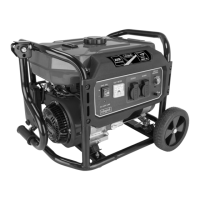
